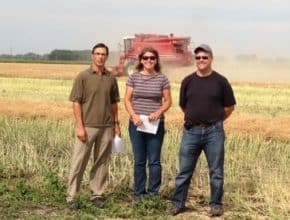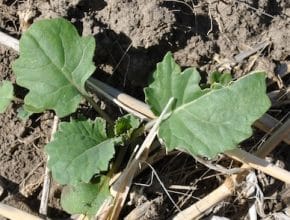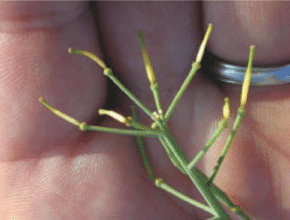Yield loss from hail depends on when it occurs. Hail on seedlings can have minimal effect while hail on pods can cause heavy loss…
Resources
-
-
Heatwaves are hard on canola, so what can be done? Boron is the only application with any science behind it, and results are inconsistent…
-
Canola has the capacity to flower longer if stress subsides and potential for higher seed yield improves. With enough moisture, canola can also resume flowering if stems are cut from hail or swathing…
-
-
-
Any stress can inhibit proper fertilization of the flowers. Common stresses included heat, drought, excess moisture, insects, herbicide damage, and nutrient deficiency. In many cases the cause may seem obvious, but it is often a good idea to investigate further to ensure there are no other contributing factors…
-
Herbicide performance is on a sliding scale depending on the weather. Cloudy days with highs of 10 C after a night near 0 C will tend to result in herbicide performance at the low end. Sunny days with highs of 15 C after a night of 3 C will provide improved control. Sunny days with highs of 20 to 25…
-
After a light frost of 0 to -2 C, damage is likely to be minor meaning swathing prematurely may do more harm than good. However, it is important to get out there and check crops to ensure damage is not greater than expected…
-
Scout fields individually and often. Determine swath timing by breaking open pods and assessing the level of seed colour change. Scouting based on field colour change is not a good indication of seed maturity. Maturity can change quickly and it may help to open up the field with a swath cut around the perimeter to grasp where the field is…



